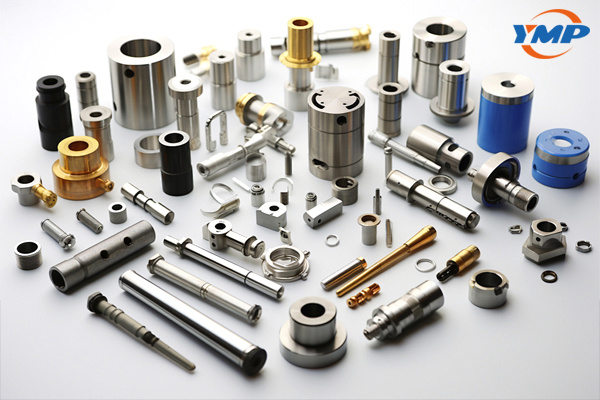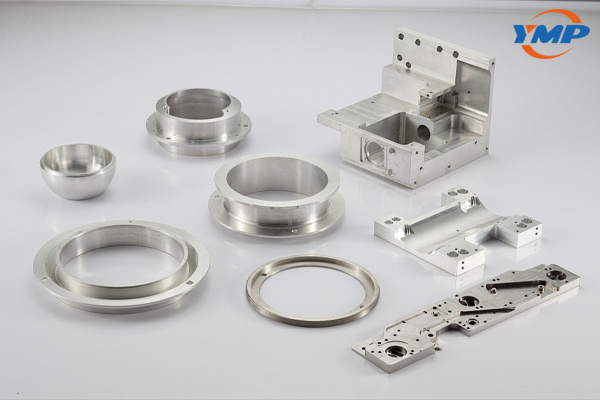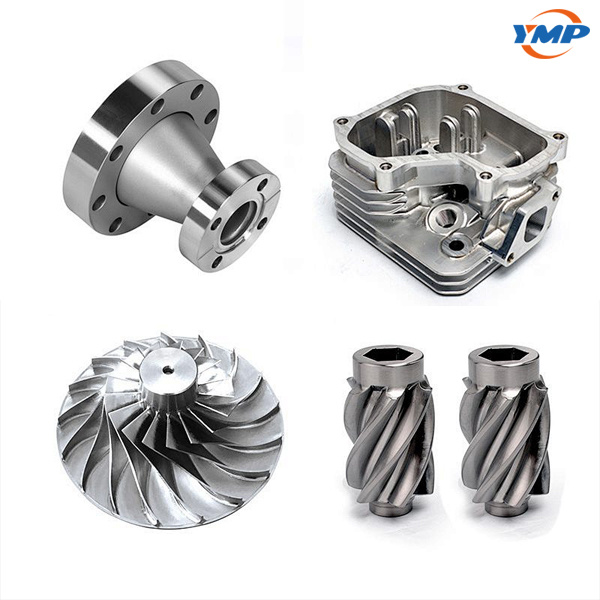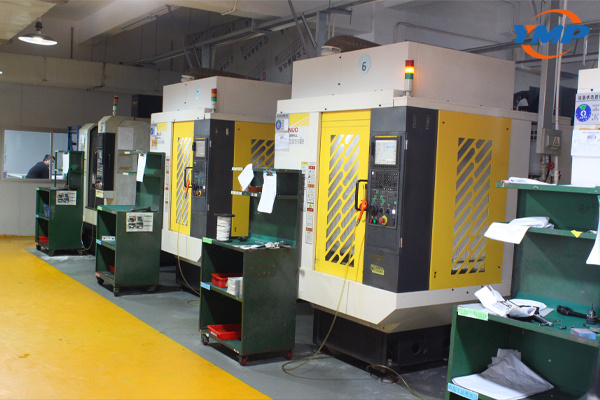Turning and milling technologies have evolved significantly with advancements in CNC technology, enabling higher precision, automation, and complex operations. Each process has its unique methods and applications, and the combination of both in multi-tasking machines allows for efficient production of complex parts with high precision.
Next, I'll take you through the two machining techniques of turning and milling.
Turning is a machining process where a cutting tool, typically a non-rotary tool bit, moves linearly while the workpiece rotates. This process is primarily used to create cylindrical parts by removing material from the external surface of a rotating workpiece.
Milling is a machining process where a rotating cutting tool moves into one or more workpieces to remove material. This process can create a variety of features such as slots, holes, and complex contours. The cutting tool in milling can move along multiple axes.
1. Conventional Lathe: Traditional machine where the workpiece rotates and the cutting tool is manually controlled by an operator.
2. CNC Lathe: Computer Numerical Control (CNC) lathes offer automated control, allowing for precise, repeatable, and complex operations with minimal manual intervention.
3. Multi-Spindle Lathes: Lathes with multiple spindles can work on multiple parts simultaneously, increasing production efficiency.
4. Swiss-Type Lathe: Specially designed for machining small, high-precision parts, especially those with complex geometries.
1. Straight Turning: Producing a cylindrical shape by moving the cutting tool parallel to the axis of rotation.
2. Taper Turning: Creating a conical shape by moving the cutting tool at an angle relative to the axis of rotation.
3. Contour Turning: Using a complex tool path to create detailed shapes with varying diameters.
4. Facing: Cutting across the end of the workpiece to produce a flat surface.
5. Parting/Cut-off: Cutting a part from the main workpiece.
6. Threading: Cutting helical grooves (threads) on the outer surface of the workpiece.
7. Boring: Enlarging an existing hole or internal surface.
8. Grooving: Creating narrow grooves or recesses on the workpiece.

1. Conventional Milling Machine: Traditional milling machines where the operator manually controls the movement of the cutting tool and workpiece.
2. CNC Milling Machine: CNC milling machines provide automated, precise control of the cutting tool and workpiece movements, allowing for complex operations and high repeatability.
3. Vertical Milling Machine: The cutting tool is vertically oriented, commonly used for face milling, end milling, and drilling.
4. Horizontal Milling Machine: The cutting tool is horizontally oriented, suitable for heavy cutting operations and machining large parts.
5. Multi-Axis Milling Machine: Machines with three, four, or five axes, allowing for complex 3D machining operations.
1. Face Milling: Cutting with the face of the tool to create flat surfaces on the workpiece.
2.Peripheral Milling: Cutting with the periphery (outer edges) of the tool, used for creating deep slots, contours, and complex surfaces.
3.End Milling:Using end mills to create pockets, slots, holes, and complex 3D shapes.
4. Profile Milling: Machining the outline of a part to achieve the desired shape.
5. Slot Milling: Creating slots or grooves in the workpiece.
6. Plunge Milling: The cutting tool moves vertically into the workpiece, useful for creating deep cavities.
7. Gear Cutting: Producing gear teeth using specialized milling cutters.
8. Chamfer Milling: Creating beveled edges or chamfers on the workpiece.
9. Thread Milling: Generating threads using a rotating cutter moving along the workpiece.

1. Mill-Turn Centers: These advanced machines combine turning and milling capabilities, allowing for the complete machining of complex parts in a single setup. This integration improves efficiency, reduces setup times, and enhances precision.
2. Live Tooling: On CNC lathes, live tooling allows for milling, drilling, and tapping operations to be performed without removing the workpiece from the lathe. This adds flexibility and capability to turning operations.
3. Multi-Tasking Machines: Machines capable of performing turning, milling, and additional processes like grinding or laser cutting in one setup, enhancing versatility and productivity.
Turning: The workpiece rotates while the cutting tool remains stationary except for its linear feed movement.
Milling: The cutting tool rotates and moves along multiple axes relative to the stationary workpiece.
Turning: Ideal for producing cylindrical parts, shafts, bolts, and screws.
Milling: Suitable for creating complex shapes, slots, pockets, gears, and intricate details on flat or irregular surfaces.
Turning: Utilizes single-point cutting tools.
Milling: Uses multi-point cutting tools.
Milling: Material is removed by a rotating tool moving through the workpiece.
Turning: Typically simpler setup with the workpiece clamped in a chuck or between centers.
Milling: Often requires more complex fixturing to secure the workpiece.
Production of shafts, bushings, pulleys, and threaded components.
Creating precision cylindrical parts.
Common in industries like automotive, aerospace, and general manufacturing for rotational components.
Manufacturing of parts with complex geometries and multiple features.
Common in industries such as aerospace, automotive, mold making, and custom machining.
Used for creating components like engine blocks, molds, and machine parts with intricate details.

1.High Precision: Turning can achieve very tight tolerances and excellent surface finishes, making it suitable for producing precision components.
2. Efficiency for Cylindrical Parts: It is highly efficient for producing cylindrical parts, such as shafts, rods, and bolts.
3. Versatility: Can handle a variety of materials, including metals, plastics, and composites.
4. Cost-Effective: For producing simple, symmetrical parts in high volumes, turning can be more cost-effective than other machining processes.
5. Simpler Tooling: Typically requires simpler tooling compared to other machining processes, reducing the setup time and cost.
1. Limited to Rotational Parts: Primarily suitable for parts with rotational symmetry, limiting its application to cylindrical shapes.
2. Material Waste: Significant material removal can generate a lot of waste, especially for large workpieces.
3.Surface Finish Issues: For long or slender workpieces, achieving a good surface finish can be challenging due to potential deflection or vibration.
4. Tool Wear: Single-point cutting tools can wear out quickly, especially when machining hard materials, requiring frequent replacement.
1. Complex Geometries: Capable of producing a wide range of complex shapes, including slots, holes, pockets, and intricate contours.
2. Multiple Axis Machining: Modern CNC milling machines can move along multiple axes, allowing for 3D machining and the creation of detailed parts.
3. Flexibility: Suitable for both small and large production runs, as well as prototyping.
4. Variety of Tools: A wide range of cutting tools and tool paths can be used, making it versatile for different machining operations.
5. High Material Removal Rates: Efficiently removes material from the workpiece, which can lead to faster production times for complex parts.
1. Complex Setup: Requires more complex fixturing and setup compared to turning, which can increase preparation time and cost.
2. Higher Cost: Generally, milling machines and their associated tooling are more expensive than those used in turning.
3. Surface Finish: Achieving a fine surface finish can be more challenging compared to turning, especially on flat surfaces.
4. Tool Wear: Multi-point cutting tools used in milling can wear out quickly, particularly when machining tough materials, necessitating frequent tool changes.
5. Limitations on Part Size: The size of the milling machine can limit the size of the parts that can be machined, especially for large workpieces.

Turning is highly effective for producing cylindrical parts with high precision and efficiency but is limited to rotationally symmetric shapes. It generally has lower setup costs but can generate significant material waste.
Milling excels in creating complex geometries and detailed features, offering great flexibility and capability for 3D machining. However, it involves more complex and costly setups and may struggle with achieving as fine a surface finish as turning in some cases.
Selecting between turning and milling depends on the specific requirements of the part being produced, including its geometry, size, required tolerances, and production volume.